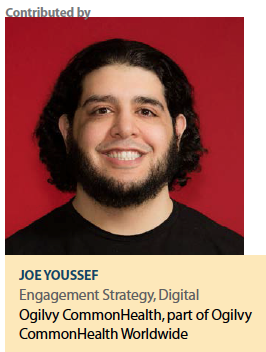Millennials? Hmmph.
 “I’m sick of hearing about them. They’re not driving my business, and I couldn’t care less about them."
“I’m sick of hearing about them. They’re not driving my business, and I couldn’t care less about them."
If you fall into this camp, you’re not reading the tea leaves. Today, the average age of a millennial is 26. They are the largest generation in the United States, at 75.4 million people,1 and account for the majority of the workforce. If those numbers don’t strike you as impressive, think about the buying power millennials represent and the impact they can make on your business.
They are aging into positions of healthcare decisions makers — as moms in charge of households (the household CEO), as caregivers to an aging population — and represent key stakeholders in healthcare. Millennials’ attitudes towards healthcare are complex. Overall, they lead healthier lifestyles compared with older generations; they exercise more, have healthier diets, and find ways to cope with stress or avoid it altogether.2 When sick, they’re quick to self-diagnose online (thank you, Dr Google) before going to see a doctor. They crave fast, easy, and convenient resolutions to their ailments. It’s not uncommon for millennials to share medication or to discontinue use once their symptoms have resolved.3
Additionally, influencing millennial behavior is complicated. They are unlike any other generation before them. They are digital natives, but are open to being reached via multiple channels. They are not brand loyal and expect a lot for their time and attention, to name a few things that make them different. Millennials self-identify as self-absorbed, greedy, and wasteful,4 but are moved to action through causes they believe in and identify with. They crave a sense of community and desire connection, inspiration, and convenience. Read that last sentence again. This is a critical fact and the key for pharma to engage this coveted audience.
Engaging the Millennial Audience
So how do you reach this fickle population? Through social media. Millennials are social media power users, who spend a lot of time there. Even better, 40% of them already turn to social media for any health-related purpose.3 Social media satisfies millennials’ desire for community and convenience, quick, on-demand access across their devices, and control of how often to engage and with whom. They’re drawn to social media because it gives them a platform to reach their peers and a voice across their network.
Another factor that makes social media so desirable is the end-to-end support it can facilitate, and its vast reach among millennials. From research and discovery, healthcare professional visit prep, education, and support: all can be managed centrally through social media. The major platforms are constantly evolving to keep people on their platforms longer. Facebook has the deepest penetration with millennials,5 and the most daily time spent (>30 minutes6). If you’re looking for a channel to pilot a social campaign on, this is a great place to start.
What are your options to engage on social? Where do you begin? One can begin with an unbranded community page to bring like individuals together and begin a conversation. Live events and paid media (sponsored posts) can drive awareness and create engagement without geographical limitations. A branded page can exist to provide information regarding the disease and your brand, and to continue engagement with your audience — as well as continuing to bring the community together.
Adverse events, customer service, and triaging can be managed through Facebook Messenger and bots (especially with AI constantly improving).
Search functionality is constantly being refined to aid with consumer discovery. Rich targeting and re-targeting capabilities exist, and are available to reach qualified targets. Last, but certainly not least, there are plenty of controls available to satisfy legal and regulatory concerns, such as the ability to moderate comments and access to pages and events.
Bottom line, get on social media to effectively reach and engage millennials. They’re on the various platforms regularly. Social media satisfies their expectations of instant gratification and community. They’re engaging with brands they love, from discovery to customer support. It’s your job, as the pharma marketer, to talk to them about the things that compel them, and that you have the authority to speak to.
Editor’s Notes:
1 Millennials overtake baby boomers as America’s largest generation. http://www.pewresearch.org/fact-tank/2016/04/25/millennials-overtake-baby-boomers/. Published April 25, 2016. Accessed December 5, 2016.
2 Millennials coming of age [infographic]. http://www.goldmansachs.com/our-thinking/pages/millennials/. Accessed December 5, 2016.
3 Millennials as consumers of healthcare. http://worldofdtcmarketing.com/millennials-as-consumers-of-healthcare/health-information-online/. Accessed December 5, 2016.
4 Millennials: which of the following words or phrases describe your generation? https://www.statista.com/statistics/469335/personality-characteristics-of-millennials-2015/. Accessed December 5, 2016.
5 Marketing to millennials 2016. http://www.fluentco.com/wp-content/uploads/2016/08/Fluent_MarketingtoMillennials_2016.pdf. Accessed December 5, 2016.
6 Levy A. Millennials spend way more time on Facebook than any other social network. http://www.fool.com/investing/general/2016/04/04/millennials-spend-way-more-time-on-facebook-than-a.aspx. Published April 4, 2016. Accessed December 5, 2016.
Ogilvy CommonHealth Worldwide — the health behavior specialists of Ogilvy & Mather — is committed to creativity and effectiveness in healthcare communications, everywhere. For more information, visit ogilvychww.com.


















